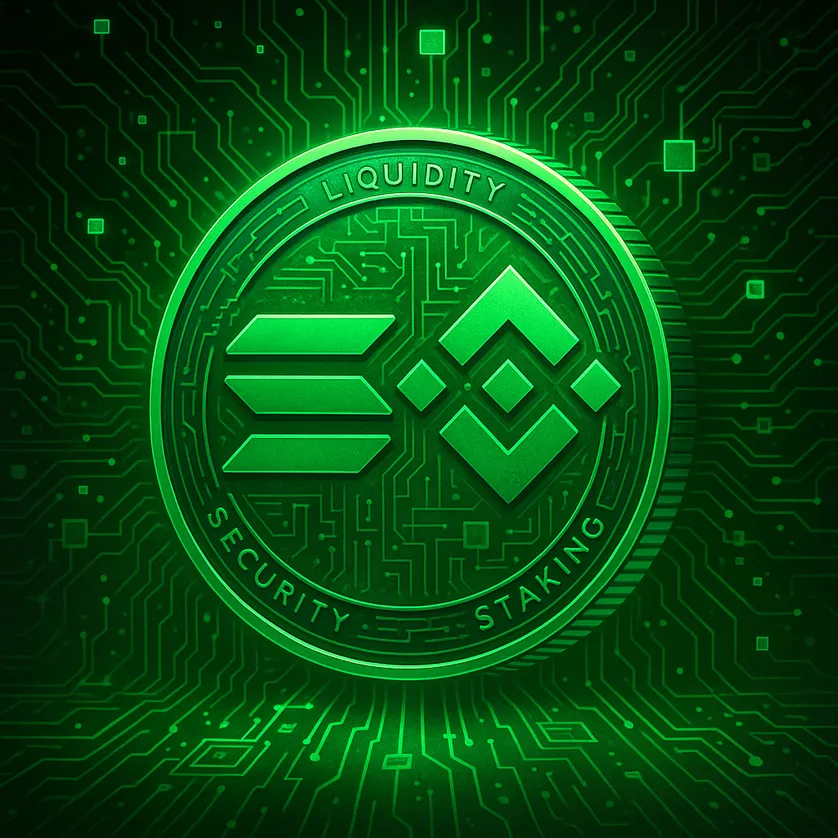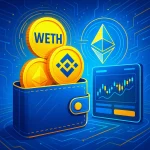Cryptocurrency staking continues to be a magnet for investors looking for passive income and additional utility. While native staking options like Solana (SOL) are well-known, new tokenized forms of staked assets open fresh opportunities for users. In this post, we delve deep into What is Binance Staked SOL (BNSOL), spell out its benefits, utility, differences from SOL, and how using platforms like CoinEx with referral code mhz7w can broaden your staking journey.
Binance Staked SOL (BNSOL) Explained
BNSOL is a liquid staking token launched by Binance to represent users’ staked Solana (SOL) on the Binance platform. When users stake their SOL with Binance, they receive BNSOL tokens at a conversion rate that tracks the value of the staked SOL plus any accumulated rewards.
Key features:
– BNSOL token: An on-chain asset pegged 1:1 to staked SOL (subject to accrued staking rewards and fees).
– Liquidity: BNSOL can be traded, held, or even used in supported DeFi protocols for additional yield, all while the underlying SOL continues to be staked.
– Rewards: Users holding BNSOL automatically earn SOL staking rewards, which are reflected in the token’s value.
How Does Binance Staked SOL (BNSOL) Work?
Binance pools user deposits of SOL and stakes them on the Solana blockchain, participating as a validator. Users receive BNSOL on BSC, allowing:
– Instant trading or liquidity provision without waiting for unstaking periods
– The ability to leverage BNSOL in other DeFi projects
– Easy redemption—swap BNSOL back to native SOL (with applicable delays for the unbonding period)
The conversion rate of BNSOL to SOL increases over time due to accumulated staking rewards, so holding BNSOL for longer earns users more value compared to instant redemptions.
Main Advantages of BNSOL
- Flexibility: BNSOL is a liquid staking token, freeing users from traditional lock-up periods.
- Compounding: Staking rewards are automatically reflected in the BNSOL token’s value
- Ease of use: No technical know-how needed; Binance manages the infrastructure
- Integrated DeFi: Use BNSOL in DeFi protocols, maximizing your yield beyond classic staking
BNSOL vs Native SOL Staking
| Feature | Native SOL Staking | Binance Staked SOL (BNSOL) |
|---|---|---|
| Liquidity | Locked during staking | Available, freely tradable |
| Passive Earnings | Yes | Yes, auto-compounding |
| DeFi compatibility | Limited | Broad and growing |
| Unstaking time | Yes (unbond period) | Fast (depends on protocol) |
Tip: Always monitor fees and conversion rates, especially when moving between BNSOL and SOL.
Why Consider BNSOL If You Use CoinEx?
If you’re looking to diversify your staking approach, platforms like CoinEx can expand your capabilities significantly. By registering with CoinEx using referral code mhz7w, you gain access to a wide variety of staking coins, flexible trading pairs involving SOL, and potential new pools that adopt liquid staking models like BNSOL. CoinEx is known for its:
– Competitive trading fees
– Broad coin selection
– User-friendly staking options
– Robust security
Explore CoinEx to unlock new earning potential and manage your crypto assets more flexibly.
Common Questions About BNSOL
Is BNSOL safe?
– Your holdings are as secure as Binance’s custodianship and the Solana protocol. Users should always exercise due diligence regarding platform risks.
What can I do with BNSOL?
– Trade on Binance or cross-chain platforms
– Use as collateral or liquidity in DeFi
– Hold for passive income
What are the fees involved?
– Binance usually charges a small fee for staking services; always check the latest fee schedule.
New Staking Frontiers with CoinEx
The evolution of staking is leading to more liquid, flexible, and rewarding systems. For new users or expert traders, CoinEx (Referral Code: mhz7w) is ideal for both exploration and maximizing your returns across assets like SOL, BNSOL, and much more.
Curious to learn more? Register on CoinEx today and start your staking journey with the right tools!





